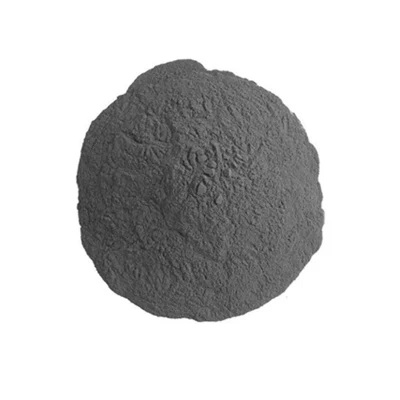Spherical Aluminium Bronze CuAl10 Alloy Powder
Formula | CuAl10, Copper Aluminum Alloy, Aluminium Bronze |
Synonyms | spherical CuAl particles, spherical Aluminium Bronze powders, Copper Aluminum Alloy Powder, CuAl10 thermal spray powder, Copper Aluminum gas atomized powder |
Appearance | Black Powder |
Particle Size | 15-53 um, 45-105 um, can be customized upon request |
Melting Point | 1035°C |
Density | 7.58 g/cm 3 |
Proof Stress | 400-530 MPa |
Tensile Strength, Yield | 600-760 MPa |
Description of Spherical Aluminium Bronze CuAl10 Powder
Aluminum bronze is a copper-based alloy with aluminum as the primary alloying element, typically containing 5% to 12% aluminum by weight. This alloy is known for its high strength, excellent corrosion resistance, and good wear resistance. The presence of aluminum gives it a golden, bronze-like appearance.
Spherical Aluminum bronze powder is a fine particle of the CuAl10 alloy, containing approximately copper and 5% to 12% aluminum. Copper Aluminium Powder is used for its high strength, excellent corrosion resistance, and wear resistance. It’s ideal for industrial applications needing durability and abrasion resistance.
Princeton Powder is a leading supplier of Aluminum bronze powder. We specialize in a comprehensive range of spherical powder products and possess extensive expertise in additive manufacturing (3D printing) industry. Aluminum bronze NiCu powder is for sale at a competitive price.
Chemical Composition
Product | Chemical Composition % | ||||
CuAl10 | Al | Cu | Fe | Si | Zn |
9.89 | Bal. | 0.025 | 0.012 | 0.005 | |
Particle Size | 15-53 μm, 45-105 μm, or customized. | ||||
Particle Size distribution
0-15μm, 15-53μm, 45-105μm, 45-150μm. (Various particle sizes can be customized)

Applications
- Powder Metallurgy: Used to create strong, wear-resistant parts through compaction and sintering.
- Coatings: Applied as a metallic coating for decorative finishes or protection against corrosion.
- 3D Printing: Utilized in additive manufacturing to produce high-strength metal components.
- Cold Casting: Mixed with resins to create items with a bronze-like appearance and enhanced durability.
Spherical Aluminium Bronze Powder Reference
Aluminum Bronze Crystallization on Deformed Base during Electron Beam Additive Manufacturing
- To obtain products by using additive manufacturing (AM) methods, it is necessary to take into account the features of the formed internal structure of the material. The internal structure depends on the 3D printing parameters. To predict it, it is effective to use computer modeling methods. For this purpose, using the example of aluminum bronze, the influence of the base structure and heat input during surfacing on the grain structure of the deposited layers was studied.
Aluminum Bronze contains approximately 9-14% aluminum and 4% iron while Nickel Aluminum Bronze contains approximately 9-11% aluminum, 4% iron, and 5% nickel. That addition of nickel in the latter further improves the corrosion resistance of a material that is already strong in this area.
Wrought aluminum bronzes contain between 4% and 12.5% Al. If less than 8% Al is present, the alloys are α-phase and may be cold worked. The two phase (α–β) alloys, which may be wrought or cast, contain 8–12.5% Al with possible additions of iron (0.5–7%), manganese (1.5–3.5%), nickel (2–7%), and silicon (2%).
Aluminum bronze density is 0.276 pounds per cubic inch. Has a higher tensile strength than other bronze alloys. Tarnish-resistant and have low oxidation, even at high temperatures. These are non-magnetic and non-sparking.

